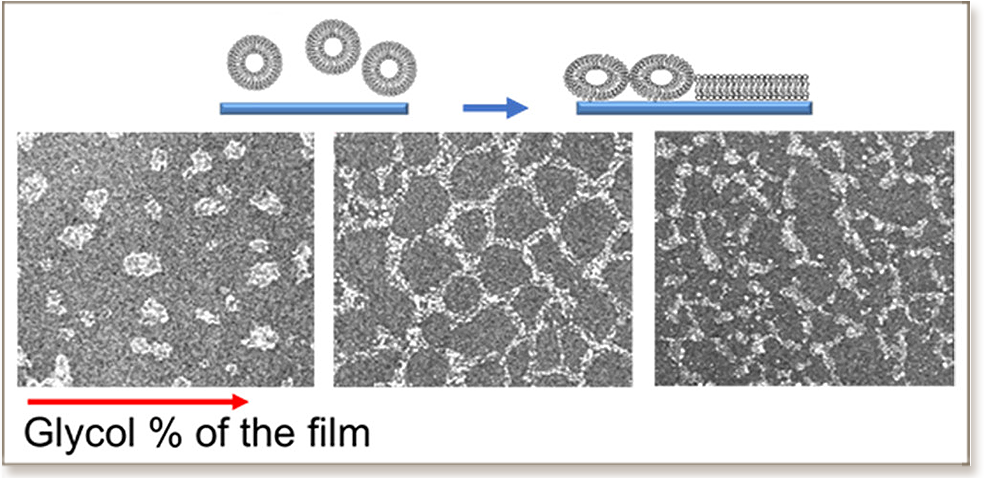
Conjugated polymers are promising engineering tools for establishing bilateral electrical communication with living systems. The free energy of their films, the roughness, and charge density play major roles in determining their interactions with lipid bilayers, which form the membrane barrier around every living cell allowing for molecular exchange with the extracellular environment. In this work, we investigate lipid bilayer formation from synthetic lipid vesicles (liposomes) on a series of amphiphilic copolymer films based on naphthalene 1,4,5,8 tetracarboxylic diimide bithiophene (NDI-T2) backbone where the alkyl side chain is gradually exchanged for an ethylene glycol-based side chain. As the concentration of ethylene glycol in the composition changes, the surface energy of the films varies drastically, which, in turn, effects the interactions with liposomes. By imaging the interactions of fluorophore-labeled liposomes with these surfaces via a fluorescence microscope, we show that the films can be cast such that ethylene glycol-rich regions, which liposomes favor, are accumulated on the surface and extract information on the wettability behavior that has not been possible using other surface sensitive techniques. This approach uncovers the solid/liquid interface of a promising class of electron transporting conjugated polymer films and suggests synthetic strategies to maximize the number of lipid-polymer contacts for the formation of supported lipid bilayers.